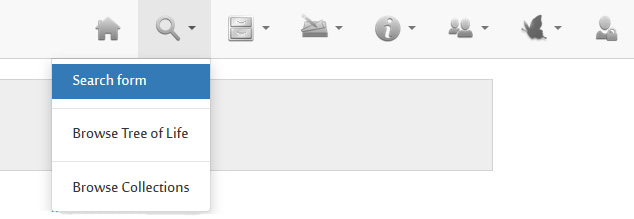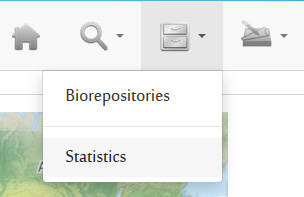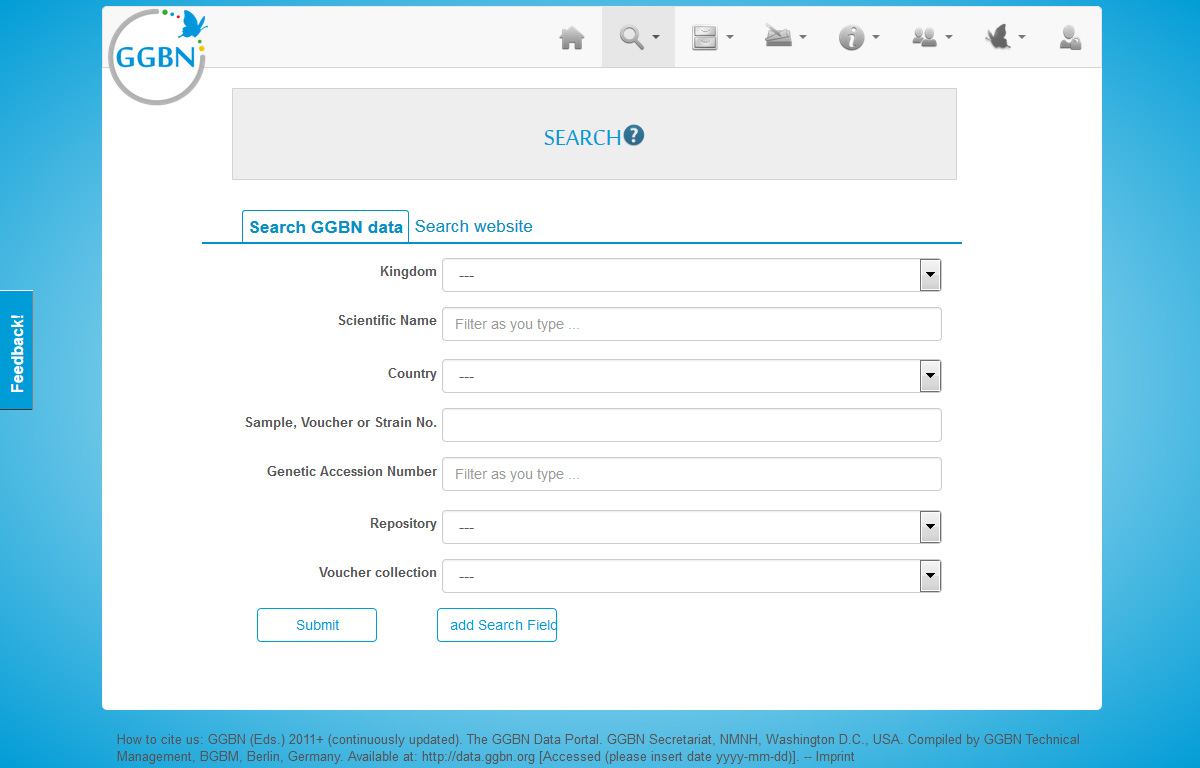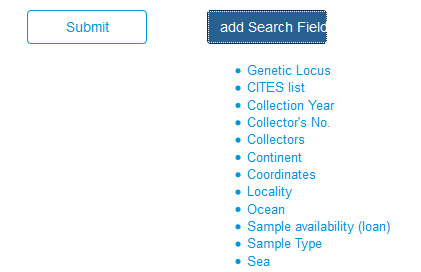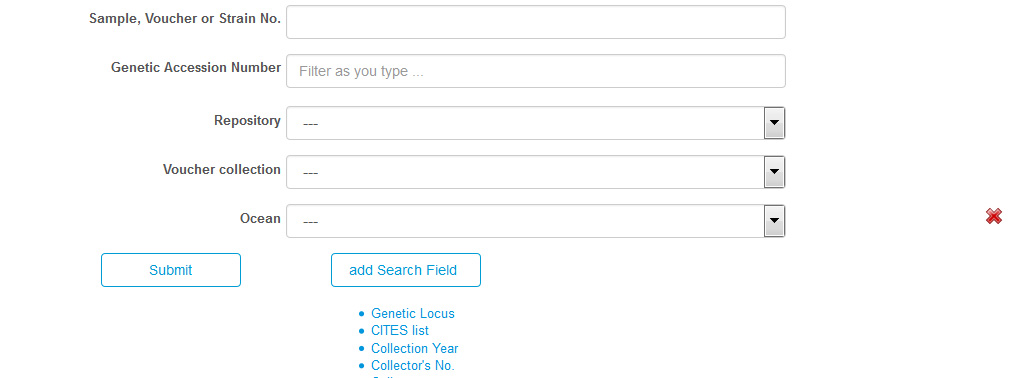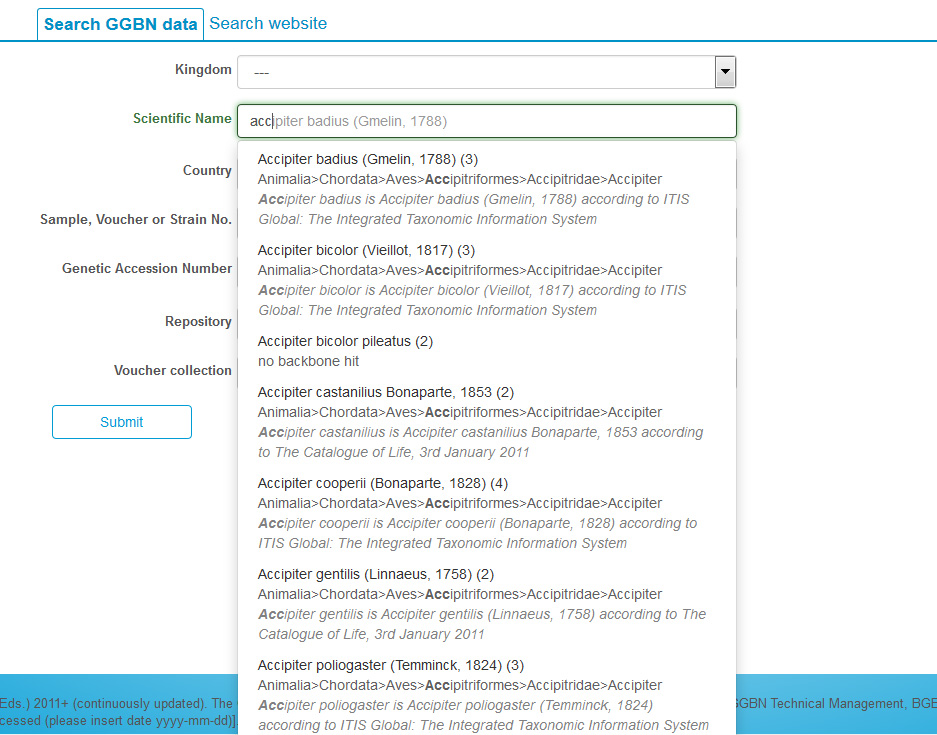Difference between revisions of "GGBN Data Portal Explanations"
(→Search by fields) |
(→Search by fields) |
||
| Line 31: | Line 31: | ||
Most of the fields are drop down lists or include suggestion lists to help you. E.g. when typing a name the portal searches for all synonyms and accepted names matching your search term and provides a suggestion list with detailed information about the name found in the GGBN backbone. | Most of the fields are drop down lists or include suggestion lists to help you. E.g. when typing a name the portal searches for all synonyms and accepted names matching your search term and provides a suggestion list with detailed information about the name found in the GGBN backbone. | ||
[[File:GGBN data portal suggestion list.jpg|center|500px]] | [[File:GGBN data portal suggestion list.jpg|center|500px]] | ||
| + | |||
| + | <div id="wikinote">You can search for any scientific name using "Scientific Name", including higher taxa. The portal will perfom exact search. If you want to do a like search, use the asterisk '*', e.g. Accipiter* will give you all records beginning with Accipiter.</div> | ||
Revision as of 19:58, 16 December 2015
Background
We use the Berlin Harvesting and Indexing Toolkit (B-HIT) to harvest GGBN provider data. The records (or units) can be harvested from providers having either a BioCASe or an IPT installation. For BioCASe providers, the schemata ABCD 2.06, ABCD 2.1, ABCDDNA, ABCDGGBN and ABCDEFG are supported (single records or ABCD Archives). For IPT providers, DarwinCore Archives are supported, including the GGBN extensions. Elements that are indexed are listed under http://wiki.bgbm.org/bhit/index.php/Indexed_fields.
The search features can be found under magnifying glass icon. You can use three options to search within the GGBN Data Portal:
- Search by fields
- Browse the tree of life
- Browse collections
Furthermore you can check out statistics of GGBN online collections.
Data Quality and Data Cleaning
During harvesting GGBN provider data are checked and cleaned if necessary. We keep the original provider data in addition to cleaned versions. Data quality tests are done using B-HIT. Country names are translated in English, ISO codes are compared to the country names, coordinates are validated and checked again both ISO code and country name. In case of incomplete data, the tool is looking into the namedareas and localities and tries to extract some information regarding the country or the water body.
Scientific names are parsed using the GBIF Name Parser (http://www.gbif.org/developer/species#parser) and customized regular expressions.
Taxonomic Backbone
After harvesting the scientific names are matched against certain checklists of the GBIF checklist bank. Higher taxa, synonyms and accepted taxa are retrieved, also using the GBIF Checklistbank webservice (http://api.gbif.org/v1/species). These checklists include: Catalogue of Life, NCBI and the GBIF backbone itself. In addition we match the names against the Prokaryotic Nomenclature up-to-date (PNU) web service, provided by the DSMZ.
Search by fields
Here you can choose different parameters to filter your results. The upper part contains parameters often used by researchers and curators. In addition you can add further parameters (click on "add search field"). We distinguish between GGBN repositories (DNA and tissue banks) and voucher collections. The latter can also be non-GGBN instutions.
Most of the fields are drop down lists or include suggestion lists to help you. E.g. when typing a name the portal searches for all synonyms and accepted names matching your search term and provides a suggestion list with detailed information about the name found in the GGBN backbone.
